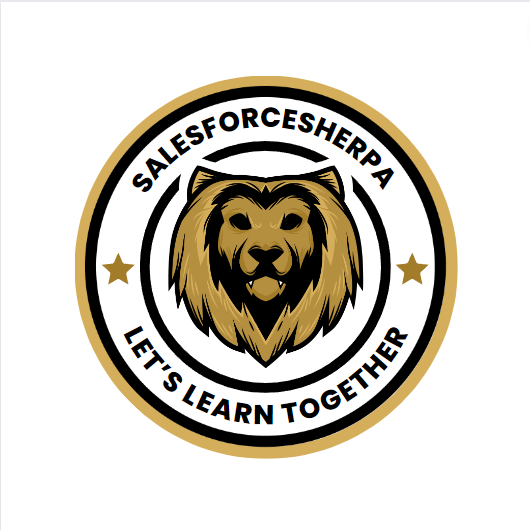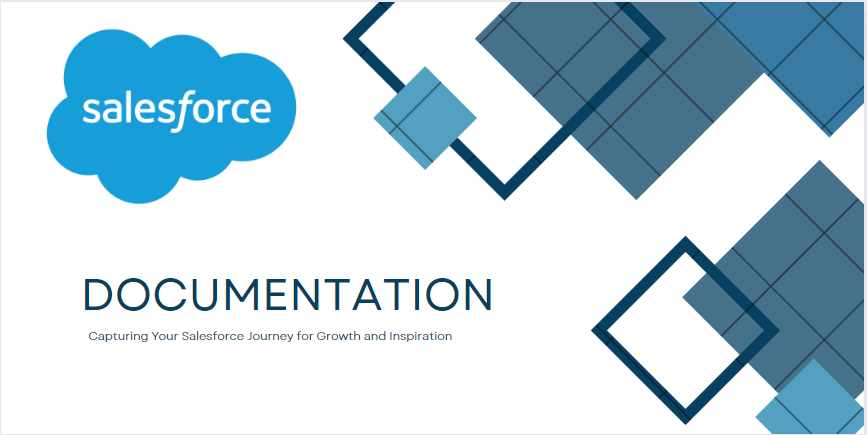A Guide to Documenting Your Journey in Salesforce: Preserving Memories and Inspiring Others
 SalesforceSherpa
SalesforceSherpa
In the fast-paced world of Salesforce, documenting your journey may not be your top priority. However, keeping a record of your experiences, achievements, and lessons learned can be immensely valuable. Not only does it provide a way to preserve memories, but it also serves as a powerful tool for inspiring others and fostering growth within the Salesforce community. In this guide, we'll explore the importance of documenting your Salesforce journey and provide practical tips to get you started.
1. Why Documenting Your Journey in Salesforce is Important
As a Salesforce professional, your journey is unique and filled with valuable insights. By documenting your experiences, you create a repository of knowledge that can benefit both yourself and others. It allows you to reflect on your growth, identify patterns, and make more informed decisions in the future.
2. Benefits of Documenting Your Journey
Documenting your journey in Salesforce offers numerous benefits. It helps you track your progress, celebrate achievements, and learn from past mistakes. Additionally, it enables you to share your knowledge with teammates, contribute to the Salesforce community, and build your professional reputation.
3. Getting Started: Setting Up Your Salesforce Documentation
3.1 Defining Your Goals
Before you start documenting, clarify your objectives. Determine what you want to achieve through your documentation efforts. Whether it's personal growth, knowledge sharing, or career advancement, having clear goals will guide your approach.
3.2 Choosing the Right Tools
Selecting the appropriate tools for documenting your Salesforce journey is crucial. Consider using platforms like Salesforce Knowledge, Confluence, or Evernote. Evaluate their features, ease of use, and integration capabilities to find the one that suits your needs best.
4. Structuring Your Documentation
Organizing your documentation ensures easy navigation and accessibility. Consider the following strategies to structure your Salesforce journey effectively:
4.1 Creating a Table of Contents
Start by creating a comprehensive table of contents. Break down your documentation into sections and subsections, making it easier to locate specific information.
4.2 Using Categories and Tags
Implement a categorization system using relevant tags and categories. This helps classify your content and enables others to find specific topics of interest quickly.
4.3 Organizing with Sections and Subsections
Divide your documentation into logical sections and subsections. This improves readability and allows for better comprehension of complex topics.
5. What to Include in Your Documentation
When documenting your Salesforce journey, consider including the following elements:
5.1 Logging Your Progress and Achievements
Track your milestones, completed projects, and achieved targets. Highlighting your progress not only boosts your confidence but also provides a record of your accomplishments.
5.2 Capturing Challenges and Lessons Learned
Document the challenges you faced and the lessons you learned along the way. Share your insights, strategies for overcoming obstacles, and tips for navigating similar situations.
5.3 Sharing Tips, Best Practices, and Success Stories
Offer valuable advice and best practices that you've discovered during your journey. Share success stories and explain how you achieved positive outcomes. This encourages others to learn from your experiences.
5.4 Incorporating Screenshots and Visuals
Make your documentation visually engaging by including screenshots, diagrams, and visuals. These visual aids enhance understanding and make complex concepts more accessible.
6. Keeping Your Documentation Updated
To ensure the ongoing usefulness of your documentation, follow these practices:
6.1 Regularly Reviewing and Editing
Set aside time periodically to review and update your documentation. As you gain more experience, your insights will evolve, and it's essential to keep your documentation aligned with your current knowledge.
6.2 Ensuring Accessibility and Permissions
Make sure your documentation is accessible to those who need it. Define appropriate permissions, allowing your team members or the broader Salesforce community to benefit from your insights.
7. Inspiring Others with Your Journey
Sharing your Salesforce journey can inspire and motivate others. Consider the following approaches:
7.1 Sharing Your Documentation Internally
Encourage your team members to document their own journeys. Share your documentation internally to inspire and support their growth. Collaborate and learn from each other's experiences.
7.2 Contributing to the Salesforce Community
Take an active role in the Salesforce community by sharing your documentation. Participate in forums, contribute to blogs, and engage with others. Your insights can make a significant impact and foster community growth.
8. Preserving Memories for Personal and Professional Growth
Documenting your journey in Salesforce goes beyond professional benefits. It allows you to preserve memories and experiences that contribute to personal growth. Look back on your achievements and progress with pride and use them as a foundation for future endeavors.
Conclusion
Documenting your journey in Salesforce is a powerful way to preserve memories, inspire others, and foster growth. By following the steps outlined in this guide, you can create a comprehensive documentation framework that not only benefits you but also contributes to the wider Salesforce community. Start documenting today and unlock the potential of your experiences.
FAQs
How much time should I spend on documenting my Salesforce journey?
- The amount of time you spend on documenting your Salesforce journey depends on your personal preference and goals. Dedicate enough time to capture important details and insights without letting documentation become a burden. Find a balance that works for you.
Can I use third-party tools for Salesforce documentation?
- Yes, you can use third-party tools for Salesforce documentation. There are various platforms available that offer features specifically designed for documentation purposes. Evaluate different options and choose the one that aligns with your requirements.
How can I encourage my team members to document their Salesforce experiences?
- Encouraging your team members to document their Salesforce experiences can be done through leading by example. Share your own documentation, emphasize the benefits, and offer support and guidance. Create a culture that values and recognizes the importance of documentation.
Is it necessary to include screenshots in my documentation?
- Including screenshots in your documentation can enhance clarity and understanding, especially when explaining complex processes or configurations. Visual aids like screenshots make your documentation more engaging and accessible.
Can I share my documentation publicly?
- Sharing your documentation publicly is a personal choice. Evaluate the sensitivity and confidentiality of the information and consider the potential impact of sharing. If appropriate, sharing your documentation can contribute to the wider Salesforce community and inspire others in their journeys.
Subscribe to my newsletter
Read articles from SalesforceSherpa directly inside your inbox. Subscribe to the newsletter, and don't miss out.
Written by
